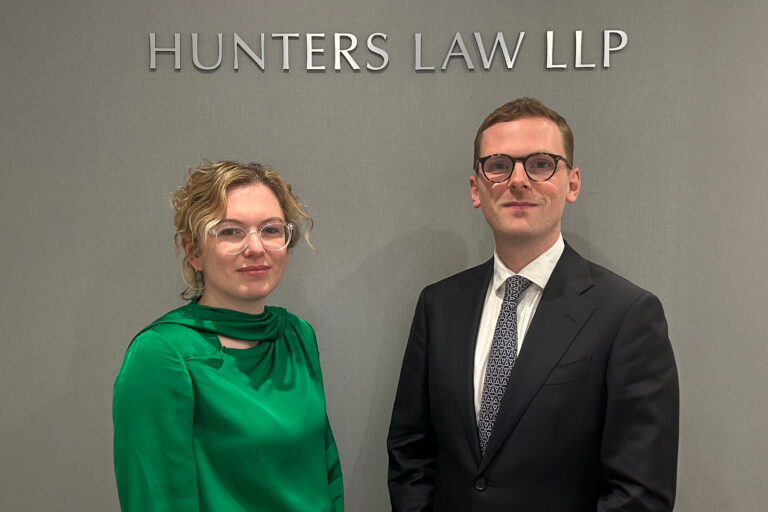Making use of inheritance tax gift exemptions
/Passle/63fcb7a0f636e91858bf05af/SearchServiceImages/2023-08-10-13-07-41-336-64d4e11dd848c6176d0c7788.jpg)
Normally, when an individual (the donor) makes an outright gift to another individual this is known as a potentially exempt transfer (PET) for inheritance tax (IHT) purposes. The gift is only ‘potentially’ exempt because there may be IHT to pay on the value of the gift if the donor does not survive it by seven years (and to the extent that any other exemptions do not apply – see below).
If an individual makes a lifetime gift to a trust this is known instead as a lifetime chargeable transfer (LCT) because the gift is immediately chargeable to IHT at a rate of 20% to the extent that the value of the transfer into trust exceeds the donor’s available tax free slice, known as the ‘nil rate band’ (NRB) (currently frozen at £325,000 until April 2028).
In addition to the LCT, most lifetime trusts are also subject to what is known as the relevant property regime. This means that, subject to any available reliefs and exemptions, the trust will be subject to IHT charges every 10 years from creation (the ‘10-year charge’) to the extent its value exceeds the NRB and also exit charges when capital is distributed from the trust (‘Exit Charges’).
There are several IHT reliefs and exemptions which can help to reduce the amount of IHT payable on a failed PET.
Application of the Nil Rate Band
On death, the NRB is applied first against lifetime gifts. It is often the case therefore that no IHT is payable on gifts made within the last seven years of the deceased's life because they fall within the NRB.
If there is any unused balance of the NRB after deduction of lifetime gifts, it will be apportioned between the deceased's estate and any trusts under which the deceased had an entitlement to income, to the extent the beneficiaries of the estate and trust are chargeable beneficiaries. If, however, the beneficiary is a surviving spouse or civil partner, no IHT will be chargeable and the balance of the NRB will be preserved and can be transferred to the surviving spouse's/civil partner's estate and utilised on their subsequent death. This is known as the ’transferable NRB’.
Taper relief
Taper relief can be claimed on gifts made at least three years before the date of death, but only to the extent that the cumulative value of all the gifts made by the donor within the last seven years of his/her life exceeds the NRB (£325,000).
The rate of IHT (usually 40%) reduces depending on the time which has elapsed between the date of the gift and the date of death, as shown below:
Years between gift and death: Rate of tax on the gift
- 3-4 years: 32%
- 4-5 years: 24%
- 5-6 years: 16%
- 6-7 years: 8%
- 7+ years: 8%
The normal expenditure out of income exemption
The normal expenditure out of income exemption is a very valuable, and often underused, IHT exemption on lifetime gifts.
Where a gift qualifies for this exemption, its value will immediately fall outside of the transferor’s estate for IHT purposes and there is no need to worry about the ‘seven-year rule’.
The exemption applies if all the following conditions are met:
- The gift or transfer of value can be shown to be part of the donor’s ‘normal’ expenditure
- It must be made from income
- The donor must retain enough income to maintain his/her normal standard of living
What is meant by 'normal expenditure'
HMRC’s interpretation is that for expenditure to be normal, the gifts should form part of a regular pattern of payments. Examples of regular gifts or payments could include gifts on special occasions (such as birthdays or Christmas), the payment of grandchildren’s school fees, an annual family holiday, insurance policy premiums, private healthcare arrangements and regular payments into a trust.
If a settled pattern of payments is not demonstrable over a period of time (say, for example, the donor dies before a regular pattern has been established), it can also be evidenced by proof of a prior commitment by the donor regarding future gifts.
Gifts must be made out of income
Examples of income include salary, dividends, pensions, bank interest, business profit and rental income.
Ideally, the income should be identified in the tax year in which gifts are made to demonstrate that there is sufficient income available. However, if necessary, income from an earlier year can be carried forward.
Income from earlier years does not retain its character as income indefinitely and HMRC normally considers that accumulated income becomes capital after two years.
Retention of normal income to maintain his/her normal standard of living
To be eligible for the exemption, the income must be surplus income after the payment of tax and other expenses to maintain the donor’s normal standard of living.
The donor’s normal standard of living is a subjective test which will vary depending upon the circumstances of the donor at different times.
If the donor has insufficient income left to meet their usual expenses after making gifts, the exemption will not be available in full but may still apply to part of the gifts.
Record keeping
It is strongly recommended that the donor keeps a note/spreadsheet which clearly shows that the regular gifts being made are from surplus income after payment of their usual expenses.
Following the death of the donor, it will be the responsibility of the executors to prove that the gifts meet the conditions for exemption. They will be required to submit details of the deceased’s normal income and expenditure and the gifts for which the exemption is being claimed for each applicable tax year (up to a maximum of seven years), in the IHT account.
It is therefore useful to keep a record of your income, expenditure, and gifts in a similar format to that contained in the IHT account, which should save your executors considerable time/expense when it comes to claiming the exemption on your passing. We can provide clients with a precedent spreadsheet specifically for this purpose.
Using the normal expenditure out of income exemption to build a tax-efficient trust fund
The exemption can be particularly useful when an individual (known as the settlor) settles surplus income into a trust during his/her lifetime which accumulates over time. In this way, the settlor can build up funds in a tax-efficient manner, while maintaining an element of control over the funds (albeit they and their spouse/civil partner must be excluded from benefitting from the trusts).
Provided the payments to the trust are made from the settlor’s surplus income and meet the above criteria, they will not be subject to the usual 20% entry charge to IHT for lifetime transfers to a relevant property trust, or the seven-year rule.
Example
| |||||||||||||||||||||||||||||
Mrs Hunter wishes to start making gifts from her surplus income to three separate trusts (which were created on different dates) for her three grandchildren. Over three years she gifts £225,000 to the trusts.
This would remove £225,000 from Mrs Hunter’s estate, saving IHT on her death of £90,000. As noted above she would not need to survive the gifts by seven years for them to fall out of account.
Mrs Hunter could gift up to £75,000 per annum and still qualify for the exemption because ‘taking one year with another’ she has sufficient income to meet the criteria.
The added benefit of paying into three separate trusts, created on different days, is that they will each have their own IHT NRB of £325,000 (if created on the same day, the NRB would be split between the three trusts). This means that the ’10-yearly charge’ and ‘exit charges’ will apply at a rate of 0% whilst the value of the assets in each trust remains below £325,000.
Gifts between spouses/civil partners
As a general rule, transfers between spouses or civil partners (whether made during lifetime or on death) are exempt from IHT.
There is no financial limit on this exemption, provided both parties are UK domiciled and are recognised under the law of England and Wales as legally married or in a civil partnership.
However, where the recipient of the gift is not domiciled in the UK, but the donor is, the spouse exemption is restricted to the NRB (i.e. £325,000). The rationale for this is that assets moving from a UK domiciled individual to a non-UK domiciled spouse/civil partner are considered more likely to pass outside the UK IHT net, as IHT is charged on the worldwide assets of a UK domiciliary, but only on the UK assets of a non-UK domiciliary.
The annual exemption
The ‘annual exemption’ allows donors to make gifts cumulatively totalling £3,000 in any tax year, without such gifts being treated as a PET. It is possible to carry any unused annual exemption forward to the next tax year, but after that it is wasted.
For example, if the donor made gifts totalling £1,000 in the 2019/20 tax year and £2,000 in the 2020/21 tax year then they would be able to carry over the unused exemption of £1,000 from the 2020/21 tax year and could therefore make gifts of £4,000 in the 2021/22 tax year without such gifts being treated as PETs. However, the £2,000 of unused annual exemption from the 2019/20 tax year would be wasted.
Gifts for weddings/civil partnerships
In addition to the above exemptions, an individual can also make a gift to someone who is getting married or entering a civil partnership without such gift being treated as a PET or eating into the other exemptions. The value of the exemption is dependent on the relationship of the recipient to the donor: the donor can give £5,000 to their child, £2,500 to a grandchild (or great-grandchild) or £1,000 to any other person without any exposure to IHT.
Small gift allowance
Finally, individuals can also make as many gifts of up to £250 per person as they wish each tax year, but the exemption cannot be applied to a recipient in tandem with another exemption.
For example, if the donor had nine grandchildren (one of whom was getting married) and had not made any gifts in the previous tax year, he could give the grandchild getting married £2,500, a further £250 to each of his other eight grandchildren, and still have £6,000 (two years' worth of annual exemptions) available to gift to his children without any of these gifts being considered a PET.
Review of IHT exemptions
The Office for Tax Simplification (OTS) presented its second report to Parliament in July 2019 reviewing a wide range of administrative and technical aspects of IHT. The report recommended that the normal expenditure out of income exemption, together with the annual exemption and gifts in consideration of marriage or civil partnership exemption, either be reformed or replaced with a higher personal gift allowance. The research conducted as part of the report suggested that an annual personal gift allowance of £25,000 would cover 55% of all normal expenditure out of income claims.
A separate report released in January 2020 on the ‘Reform of Inheritance Tax’ by the All-Party Parliament group for Inheritance & Intergenerational Fairness also suggested the abolition of the normal expenditure out of income and other gift exemptions to be replaced with an annual gift allowance set at a level of £30,000.
Since the COVID pandemic there has, however, been no further suggestion of changes to IHT, but it is always possible that the subject will be revisited in years to come. In the meantime, where the conditions for this exemption are met, it remains one of the most valuable IHT exemptions available, not least because there is no statutory limit on the amount of exemption that may be claimed.





